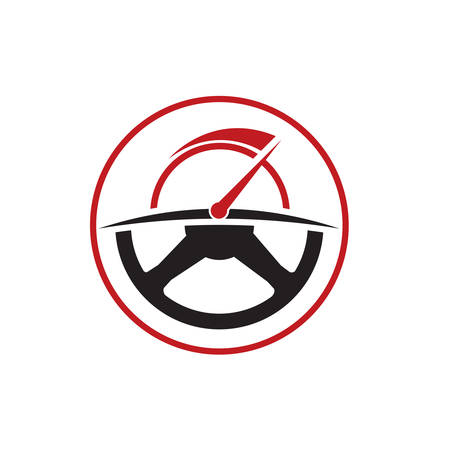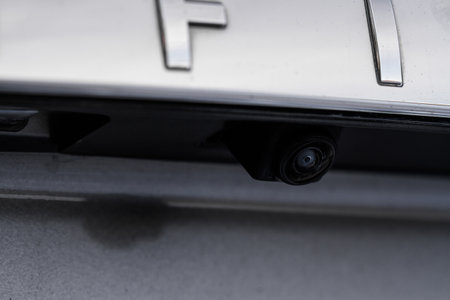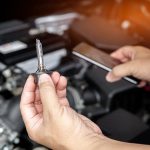1. Introduction to Tire Tread Wear
Tires are one of the most important components of your vehicle, directly affecting safety, handling, and overall performance. One critical aspect of tire maintenance is monitoring tread wear. The depth and condition of your tire tread determine how well your car grips the road, especially in wet or slippery conditions.
Why Tire Tread Depth Matters
Tire tread depth plays a key role in how your vehicle performs. As tread wears down over time, tires lose their ability to provide proper traction. This affects braking, handling, and stability, increasing the risk of accidents.
How Tread Depth Affects Performance
| Tread Depth | Performance Impact |
|---|---|
| New Tires (10/32” – 12/32” tread) | Maximum traction and safety, optimal braking and handling. |
| Moderate Wear (6/32” – 9/32” tread) | Still provides good performance but may show reduced wet traction. |
| Worn Tires (3/32” – 5/32” tread) | Decreased traction, especially in wet conditions, longer braking distances. |
| Critical Wear (Below 2/32” tread) | Dangerous driving conditions, increased risk of hydroplaning, poor braking. |
The Legal Minimum Tread Depth
In the U.S., the legal minimum tread depth is 2/32 of an inch. Many states require replacing tires when they reach this level to ensure road safety. However, experts recommend replacing tires before they reach this point, especially if you frequently drive in wet or snowy conditions.
How to Measure Tire Tread Depth
You can check your tread depth using a simple method called the penny test. Insert a penny into the tread grooves with Lincoln’s head facing down. If you can see the top of Lincoln’s head, your tread is too shallow, and it’s time to replace your tires.
2. Common Signs of Tire Wear
Keeping an eye on your tire tread wear is essential for maintaining road safety and vehicle performance. Recognizing the early warning signs can help you replace your tires before they become a serious risk. Below are some common indicators that your tires may need to be replaced.
Uneven Tread Wear
If you notice that one side of your tire has more wear than the other, it could be a sign of improper alignment, suspension issues, or incorrect tire pressure. Uneven tread wear can make handling unpredictable, reducing your car’s stability.
Low Tread Depth
A tire with insufficient tread depth has less grip, especially in wet conditions. The easiest way to check tread depth is with the penny test. Insert a penny into the tread with Lincoln’s head facing down. If you can see the top of his head, your tires are too worn and need replacing.
Cracks in the Sidewall
Over time, exposure to sunlight, extreme temperatures, and road debris can cause cracks in your tire’s sidewall. These cracks can lead to slow air leaks or, in severe cases, a blowout while driving.
Bald Spots and Cupping
Bald spots, where the tread is completely worn down in places, indicate excessive wear. Meanwhile, cupping (wavy indentations across the tread) may suggest suspension problems. Both of these signs mean your tires are no longer providing proper traction.
Tire Wear Signs and Their Potential Causes
| Tire Wear Sign | Possible Cause |
|---|---|
| Uneven Tread Wear | Alignment issues, improper inflation, suspension problems |
| Low Tread Depth | Regular wear and tear, lack of rotations |
| Cracks in the Sidewall | Exposure to harsh conditions, aging tires |
| Bald Spots | Hard braking, under-inflation |
| Cupping | Suspension issues, wheel imbalance |
By regularly inspecting your tires for these common warning signs, you can help ensure a safer drive and avoid costly repairs down the road.

3. The Penny Test and Other Tread Depth Checks
Checking your tire tread depth is essential for ensuring your vehicle’s safety and performance. Worn-out tires can reduce traction, increase stopping distance, and make driving in wet conditions dangerous. Luckily, there are simple ways to check your tire tread depth at home.
Using the Penny Test
The penny test is one of the easiest and quickest ways to check if your tires need replacing. Here’s how you can do it:
Steps to Perform the Penny Test
- Take a penny and hold it so that Lincoln’s head is facing downward.
- Insert the penny into the tread grooves of your tire.
- Check how much of Lincoln’s head is visible.
Interpreting the Results
| Visible Part of Lincolns Head | Tread Depth Status |
|---|---|
| Lincolns head is partially covered | Tread is still in good condition |
| Lincolns head is fully visible | Treads are too shallow; tire replacement needed |
Using a Tread Depth Gauge
A tread depth gauge is a more precise tool for measuring tire tread wear. It provides an accurate reading of how much tread remains on your tire.
Steps to Use a Tread Depth Gauge
- Place the base of the gauge on the tire tread.
- Push the probe down into the groove until it stops.
- Read the measurement on the gauge.
Understanding Tread Depth Measurements
| Tread Depth (in 32nds of an inch) | Tire Condition |
|---|---|
| 10/32″ – 12/32″ | New tire, excellent condition |
| 6/32″ – 9/32″ | Good condition, but keep monitoring |
| 4/32″ – 5/32″ | Consider replacing soon, especially for wet conditions |
| 2/32″ or less | Time to replace; legally unsafe |
Other Ways to Check Tire Tread
Besides the penny test and tread depth gauge, other methods include:
- Quarter Test: Similar to the penny test, but using a quarter. If Washingtons head is visible, tread depth is below 4/32″.
- Tread Wear Indicators: Most modern tires have built-in wear bars that appear when tread depth reaches a dangerous level.
Regularly checking your tire tread can help you stay safe on the road and avoid unexpected tire failures. If your tread is too low, replacing them promptly is crucial for maintaining traction and safety.
4. Causes of Premature Tire Wear
Understanding what causes premature tire wear can help you extend the life of your tires and improve your driving safety. Several factors contribute to excessive tread wear, including improper inflation, misalignment, and driving habits. Below, we’ll discuss these issues in detail.
Improper Tire Inflation
Keeping your tires properly inflated is crucial for even tread wear. Both underinflation and overinflation can lead to premature wear and negatively affect your vehicle’s performance.
| Inflation Issue | Effect on Tire Wear |
|---|---|
| Underinflation | Causes excessive wear on the outer edges of the tread. |
| Overinflation | Leads to excessive wear in the center of the tread. |
To prevent uneven wear, regularly check your tire pressure using a pressure gauge and ensure it matches the manufacturer’s recommended PSI (pounds per square inch).
Wheel Misalignment
Wheel misalignment happens when your tires are not correctly aligned with each other and the road. This can result from hitting curbs, potholes, or general wear in your suspension components. Misalignment leads to uneven tread wear and can cause your car to pull to one side.
Signs of Misalignment
- Uneven tread wear (one side of the tire wearing faster than the other).
- Vehicle pulls to one side while driving.
- Steering wheel is off-center even when driving straight.
If you notice any of these issues, it’s best to have your alignment checked and adjusted by a professional to prevent further tire damage.
Driving Habits
Your driving habits play a big role in how quickly your tires wear out. Aggressive driving, sudden braking, and high-speed cornering cause excessive friction on the tires, leading to rapid tread wear. Additionally, frequently driving on rough or uneven surfaces can accelerate tread damage.
How to Reduce Tire Wear from Driving Habits
- Avoid hard braking and sudden accelerations.
- Take corners at moderate speeds.
- Drive on smoother roads whenever possible.
- Rotate your tires regularly to ensure even wear.
By adjusting your driving style and maintaining your vehicle properly, you can significantly extend the lifespan of your tires and improve road performance.
5. When to Replace Your Tires
Knowing when to replace your tires is essential for your safety and vehicle performance. Worn-out tires can reduce traction, increase braking distances, and make driving in wet or icy conditions more dangerous. Below are some key signs that indicate its time for new tires and tips on choosing the right replacements.
Signs You Need New Tires
There are several easy ways to tell when your tires need replacing. If you notice any of these signs, its time to consider getting new tires:
Tread Wear Indicators
Most modern tires come with built-in tread wear indicators (small rubber bars across the grooves). If these bars are flush with the tread, your tires are too worn to drive on safely.
The Penny Test
An easy way to check tread depth is with a penny. Insert a penny into the tread with Lincolns head facing down:
- If you can see the top of Lincoln’s head, your tread is too shallow, and it’s time to replace your tires.
- If part of his head is covered, your tread is still deep enough for safe driving.
Cracks and Bulges
Look for cracks on the sidewalls or bulges in the tire. These can indicate structural weaknesses that may lead to a blowout.
Uneven Tread Wear
If one part of the tire is more worn out than the rest, it could be a sign of improper inflation, alignment problems, or suspension issues. Uneven wear means your tires arent wearing down evenly, which affects performance and safety.
Excessive Vibration
If you feel a lot of vibration while driving, it may be due to tire imbalance or internal tire damage. If the issue persists after balancing or rotating your tires, replacement may be necessary.
How to Choose the Right Replacement Tires
Once you determine you need new tires, picking the right ones is important for performance, fuel efficiency, and safety.
Check Your Vehicle’s Requirements
Your owners manual or the label inside your driver’s door will show the correct tire size, speed rating, and load capacity for your vehicle.
Consider Your Driving Conditions
Think about where and how you drive most often. Do you need all-season tires, performance tires, or winter tires? Matching your tires to your driving needs will improve safety and longevity.
Compare Tire Brands and Ratings
Different brands offer various levels of durability, comfort, and traction. Checking online reviews and safety ratings can help you make an informed decision.
New vs. Used Tires
| Factor | New Tires | Used Tires |
|---|---|---|
| Tread Depth | Full tread, maximum longevity | Partial tread, limited lifespan |
| Safety | Guaranteed quality and performance | Potential hidden damage |
| Cost | Higher upfront cost | Cheaper but may need replacement sooner |
Professional Installation
It’s best to have new tires installed by a professional to ensure proper balancing and alignment, helping them last longer and perform better.
By following these guidelines, you can ensure youre replacing your tires at the right time and selecting the best ones for your driving needs.


